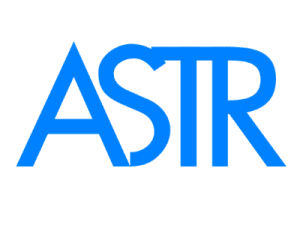AIP and Nutrient Deficiency: Why You May Feel Worse Over Time
AIP and Nutrient Deficiency: Why You May Feel Worse Over Time
The AIP (Autoimmune Protocol) diet is often used as a short-term elimination plan to calm autoimmune flares. But while it can provide symptom relief initially, many people begin to feel worse after several weeks or months. The reason? Nutrient deficiency.
By removing so many food groups—including grains, legumes, dairy, eggs, seeds, and nightshades—the AIP diet risks robbing your body of critical vitamins and minerals needed for energy, immune regulation, and hormone balance.
Why Nutrient Deficiency Happens on the AIP Diet
The AIP diet is built on restriction. While this helps eliminate potential triggers, it also eliminates many nutrient-dense foods without adequate replacements. Over time, this can lead to:
-
Fatigue and brain fog
-
Hair thinning and brittle nails
-
Low thyroid function
-
Poor immune tolerance
-
Hormonal imbalances
📚 Rogers et al., 2018; Ames, 2004
1. Common Nutrient Deficiencies on AIP
Let’s break down the most common deficiencies caused by long-term AIP eating:
❌ Vitamin B12
Missing from AIP due to limited animal protein, no eggs, and no fortified foods.
Deficiency leads to fatigue, depression, brain fog, and neuropathy.
❌ Folate and B6
Grains, legumes, and nightshades are key sources of B vitamins—restricted on AIP.
Deficiency may cause mood issues, hormone imbalances, and high homocysteine.
❌ Vitamin D and Calcium
AIP excludes dairy, making it hard to get calcium. Many also avoid fortified foods.
Low levels can lead to bone loss, fatigue, and immune dysfunction.
❌ Magnesium and Potassium
Nuts, seeds, legumes, and bananas are removed—yet these are rich in electrolytes.
Deficiency can cause muscle cramps, constipation, fatigue, and anxiety.
❌ Fiber and Resistant Starch
Without legumes, grains, or seeds, most AIP eaters are fiber-deficient.
Fiber is vital for feeding the gut microbiome and producing anti-inflammatory compounds like butyrate.
📚 Morris et al., 2006; Deehan et al., 2020; Singh et al., 2017
2. Why You Might Feel Worse Over Time
If you’re noticing fatigue, hair shedding, irritability, or brain fog, it could be your body signaling it’s undernourished, not healing.
Many people blame their symptoms on food reintroductions or flares—when in reality, the cause may be:
-
Lack of diverse micronutrients
-
Too few calories or healthy fats
-
Gut microbiome imbalance from low fiber
-
Blood sugar swings due to low carb intake
📚 West et al., 2020; Sonnenburg & Sonnenburg, 2015
3. The ASTR Diet: A Safer, More Balanced Alternative
Dr. Joseph Jacobs developed the ASTR Diet after struggling with fatigue, inflammation, and restrictive eating plans that didn’t work. Unlike AIP, the ASTR Diet:
✅ Prioritizes nutrient repletion with diverse whole foods
✅ Supports long-term gut health with fiber-rich anti-inflammatory choices
✅ Balances blood sugar and hormone levels
✅ Includes gluten-free grains, clean legumes, and healthy fats in a structured, healing plan
✅ Emphasizes detoxification and root-cause healing—not restriction alone
📘 Learn more in Eat to Heal
AIP vs. ASTR Diet for Nutrient Sufficiency
| Nutritional Factor | AIP Diet | ASTR Diet |
|---|---|---|
| B vitamin sources | ⚠️ Limited | ✅ Replenished |
| Fiber & gut support | ❌ Inadequate | ✅ Included |
| Calcium & magnesium | ⚠️ Low | ✅ Balanced |
| Long-term sustainability | ❌ Restrictive | ✅ Sustainable |
| Designed to heal root causes | ❌ Focuses on triggers | ✅ Focuses on healing |
Final Thoughts: Healing Shouldn’t Leave You Depleted
If you’re still exhausted on AIP, don’t ignore the signs. Nutrient deficiency is common, even on “healthy” elimination diets. The ASTR Diet offers a more supportive, replenishing way to restore health without risking burnout or malnutrition.
📘 Get started with Eat to Heal
👉 Book your free consultation with an ASTR health coach:
🔗 Schedule here
Referências
-
Ames, B. N. (2004). A role for nutritional deficiencies in mitochondrial decay. Annals of the New York Academy of Sciences, 1019, 406–411. https://doi.org/10.1196/annals.1297.064
-
Rogers, M. A., et al. (2018). Nutrient deficiencies in elimination diets: Risks and recommendations. Clinical Nutrition, 37(5), 1661–1669. https://doi.org/10.1016/j.clnu.2017.06.012
-
Deehan, E. C., et al. (2020). Dietary fiber and microbiome health. Cell Metabolism, 32(4), 571–582. https://doi.org/10.1016/j.cmet.2020.09.006
-
Morris, M. S., et al. (2006). Folate and B vitamins in chronic fatigue and mood disorders. Psychosomatic Medicine, 68(2), 210–216. https://doi.org/10.1097/01.psy.0000204623.77323.b4
-
Singh, R. K., et al. (2017). Diet and the human gut microbiome. Journal of Translational Medicine, 15, 73. https://doi.org/10.1186/s12967-017-1175-y
-
Sonnenburg, E. D., & Sonnenburg, J. L. (2015). Starving the microbiome: Modern diets and microbial extinction. Nature Reviews Microbiology, 13(6), 321–326. https://doi.org/10.1038/nrmicro3439
-
West, J., et al. (2020). Disordered eating and nutrient gaps in restrictive diets. Appetite, 144, 104485. https://doi.org/10.1016/j.appet.2019.104485

